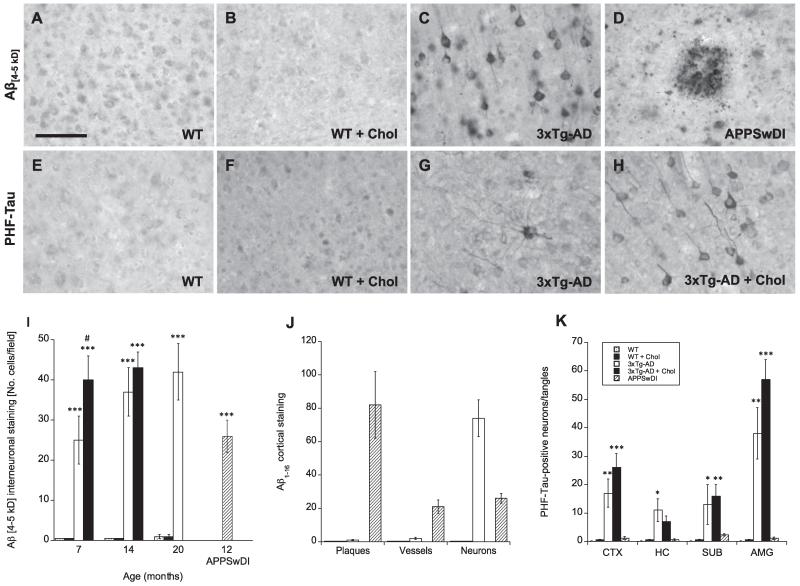Fig. 2.
Effects of high cholesterol diet on β-amyloid and tau pathology in wildtype (WT) and triple-transgenic (3xTg) AD mice. Wildtype (WT; A, B, E, F) and triple-transgenic AD (3xTg-AD; C, G, H) mice were fed a normal (A, C, E, G) or 5% cholesterol diet (B, F, H) for 7, 14, and 20 months. APPSwDI mice (12-month-old) were used as a positive control for plaque deposition (D). At different time points, brains were collected, sectioned (40 μm), and stained for β-amyloid (Aβ 4–5 kD; A–D, I) or phospho-tau (E–H). Aβ-positive plaques were most prominent in APPSwDI mice (D). Phospho-tau neurons were visible in 3xTg-AD mice (G) and appeared enhanced by cholesterol diet (H). Images shown were taken from animals at 20 months of age, except for 3xTg-AD + Chol animals (H), which only survived up to 14 months. Quantitative analysis is shown for interneuronal Aβ 4–5 kD staining (I), Aβ 1–16 staining (J) and phospho-tau staining (K). Different treatments (bar labeling representing animal groups) are explained in panel K. Three to four brain sections were evaluated per animal. Values represent mean ± SEM. Five animals were examined per group. Statistical analysis was performed using a one-way ANOVA and Fisher’s LSD posthoc test. Symbols indicate the significant difference between groups compared to WT (*p < 0.05, **p < 0.01, ***p < 0.001) or 3xTg-AD (#p < 0.05). Scale bar in A = 50 μm (A–H).

